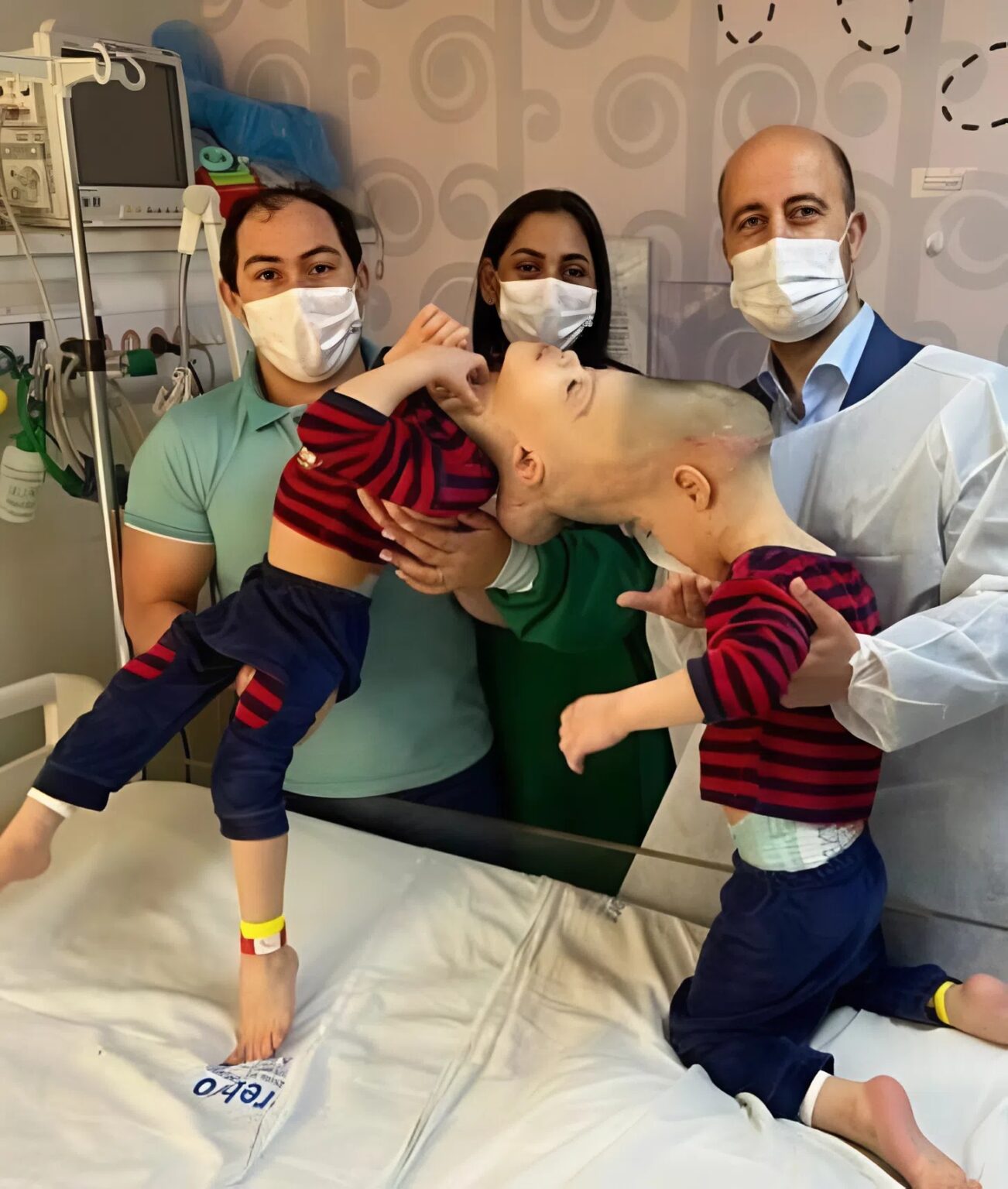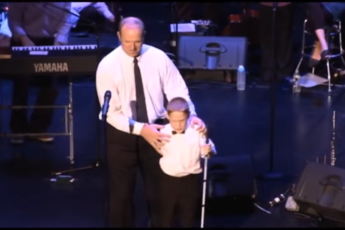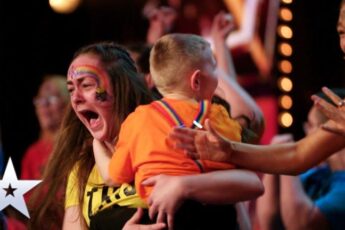
In August 2022, something truly extraordinary happened in Brazil—something that doctors called a miracle, a feat that seemed almost impossible just a few years ago. Two brothers, Arthur and Bernardo Lima, born in 2018, had always been inseparable in the most literal sense. From the moment they entered the world, they shared everything—blood vessels, parts of the brain, and at the top of their heads, their skulls were fused together. This extremely rare condition, called craniopagus twins, occurs roughly once in every two and a half million births. It’s a medical phenomenon so rare that only a handful of cases are documented worldwide, making each story astonishingly unique.
For nearly four years, Arthur and Bernardo lived their lives side by side—sleeping, eating, playing, and discovering the world as a single unit. They had never seen the world apart or looked into each other’s eyes directly. Imagine feeling the warmth of your brother’s breath, knowing he’s near, hearing his voice echo in your head, but never once being able to truly see him face-to-face. Their lives were a testament to resilience and the unbreakable bond of brotherhood, but it also presented immense challenges every day. Simple tasks like turning their heads, sharing a toy, or even trying to look at each other’s faces were impossible without risking serious injury.
Their parents, overwhelmed but hopeful, sought help at a specialized children’s hospital in Rio de Janeiro, where more than 100 medical experts from various fields united to take on what was seen as one of the most complex surgeries imaginable. Under the leadership of the renowned surgeon Noor Suryate Gurjar, famous for his successful operations on conjoined twins in India, a long and meticulous preparation process began. Every possible detail was examined—brain maps, blood vessel connections, and the delicate tissues that linked their skulls. The goal was to carefully separate the boys while preserving as much of their brain function as possible.
What made this story even more incredible was the use of the latest technology, a pioneering approach in Brazil. For the first time in the country, the medical team created detailed 3D models of Arthur and Bernardo’s skulls, printing precise replicas that allowed them to see every inch of the complex structure within their heads. They also used virtual reality (VR) headsets to rehearse the entire operation. In these immersive simulations, surgeons practiced carefully cutting through the blood vessels and brain tissues, running through every potential scenario in a virtual space. This meticulous preparation was crucial because a single mistake could have meant losing one or both boys forever.
The months leading up to the grand operation involved eight preparatory procedures to address issues such as blood flow, tissue separation, and ensuring they had enough strength and stability for surgery. Every step was monitored carefully, from testing their reactions to stress to planning how to minimize blood loss. The day of the operation finally arrived, and it lasted over 23 hours. The operating room buzzed with intense focus, with surgeons working in shifts, dedicating every ounce of skill and care to their task. The atmosphere was tense but filled with hope.
And then, after long hours of delicate work, the surgeons finally succeeded. The moment was nothing short of a triumph. The two boys, once joined at the head, now lay side by side on the operating table. They were separated—free. The most emotional part of the day came next—when the surgeons gently turned their heads toward each other, allowing the boys to finally see and look into each other’s eyes for the very first time. Witnesses described the room erupting in applause and tears of joy. It was a tearful, triumphant scene—proof that even the most daunting challenges could be overcome with dedication, innovation, and hope.
Today, Arthur and Bernardo are undergoing long and careful rehabilitation. They face the enormous task of learning how to sit, stand, and walk independently for the first time in their lives. Until now, their bodies had been fused and synchronized, and they depended heavily on each other. Their mother says that this moment feels like her sons have been born again—reborn into a new and brighter future. Every day, she watches them take their first tentative steps toward independence, filled with a mixture of awe and love.
Their story has become a shining beacon of what medical science and human perseverance can achieve. It’s a testament to the power of hope, to the unbreakable bond of family, and to the extraordinary lengths doctors will go to save lives.









